RARE! WWII 1943 Operation Avalanche "Type 1" Landing Craft on D-Day Mainland Italy Beachhead Military Intelligence Combat Action 8x10 Photograph
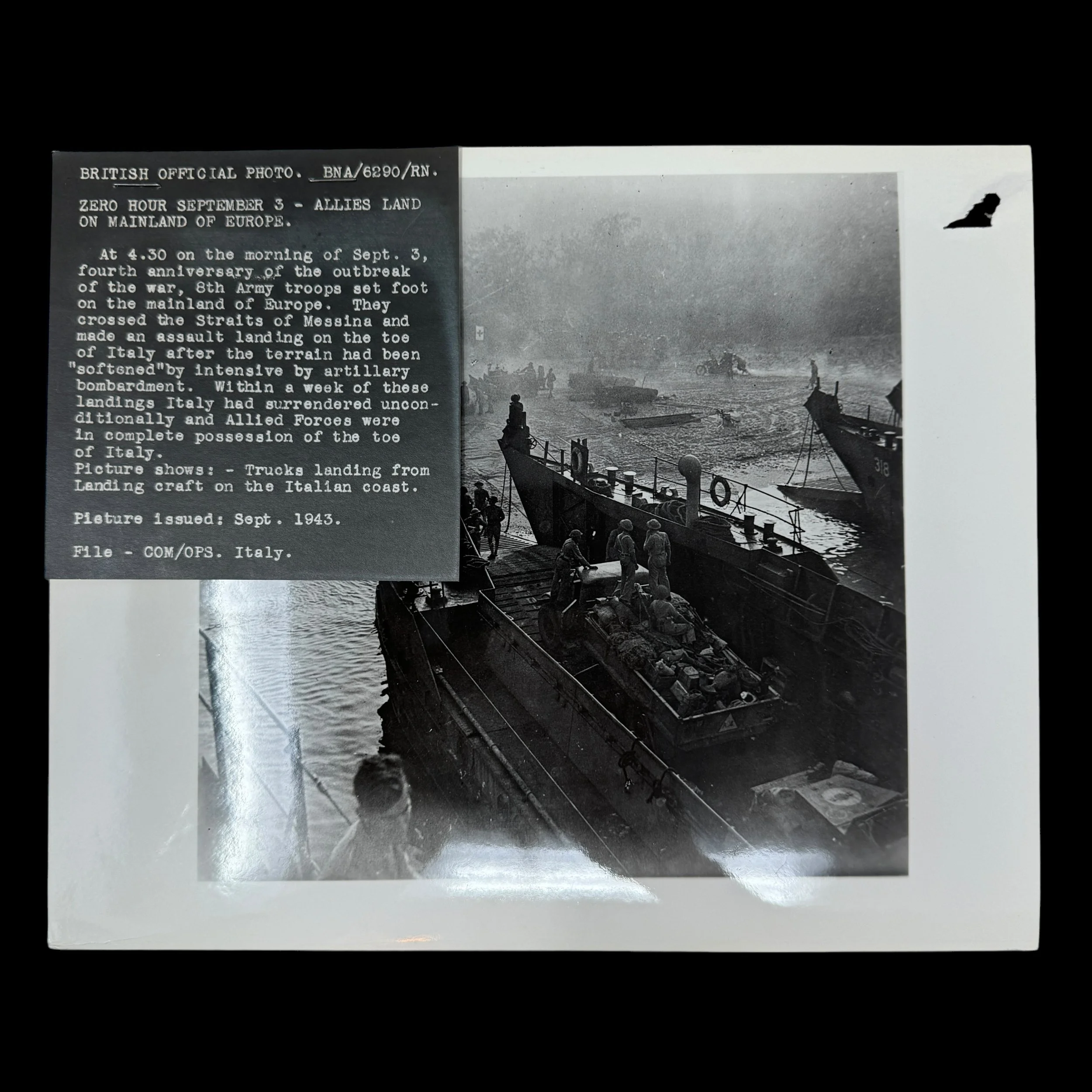






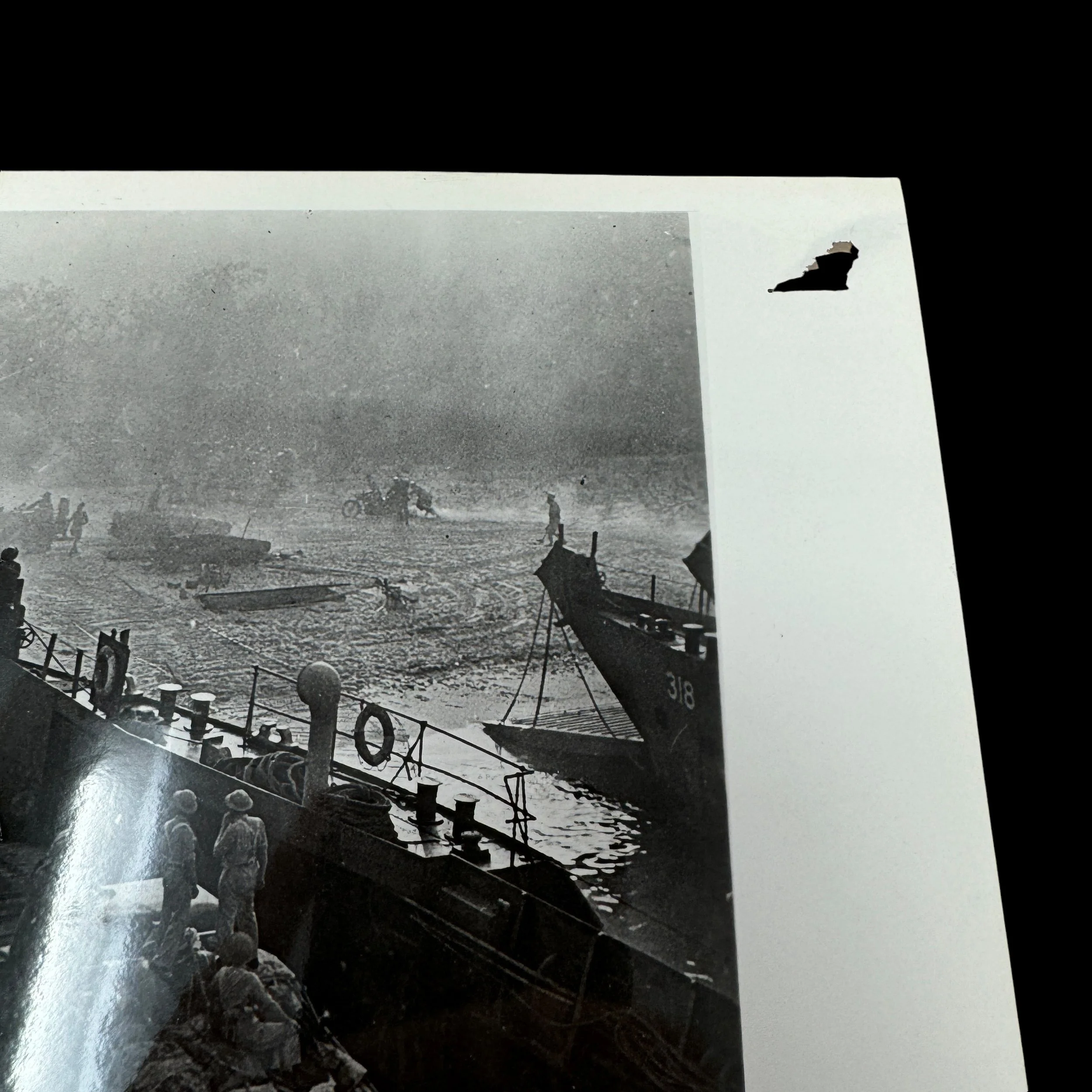
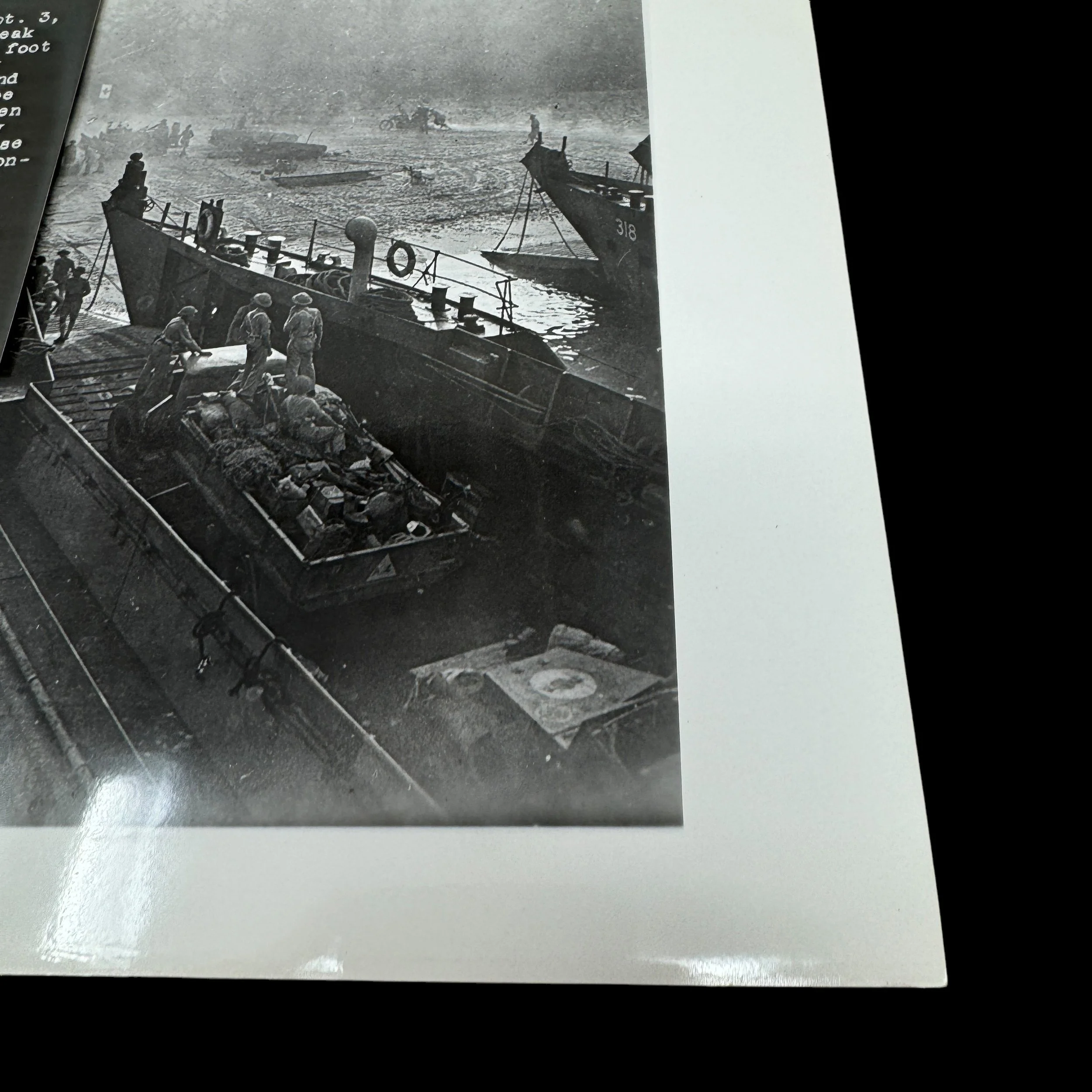
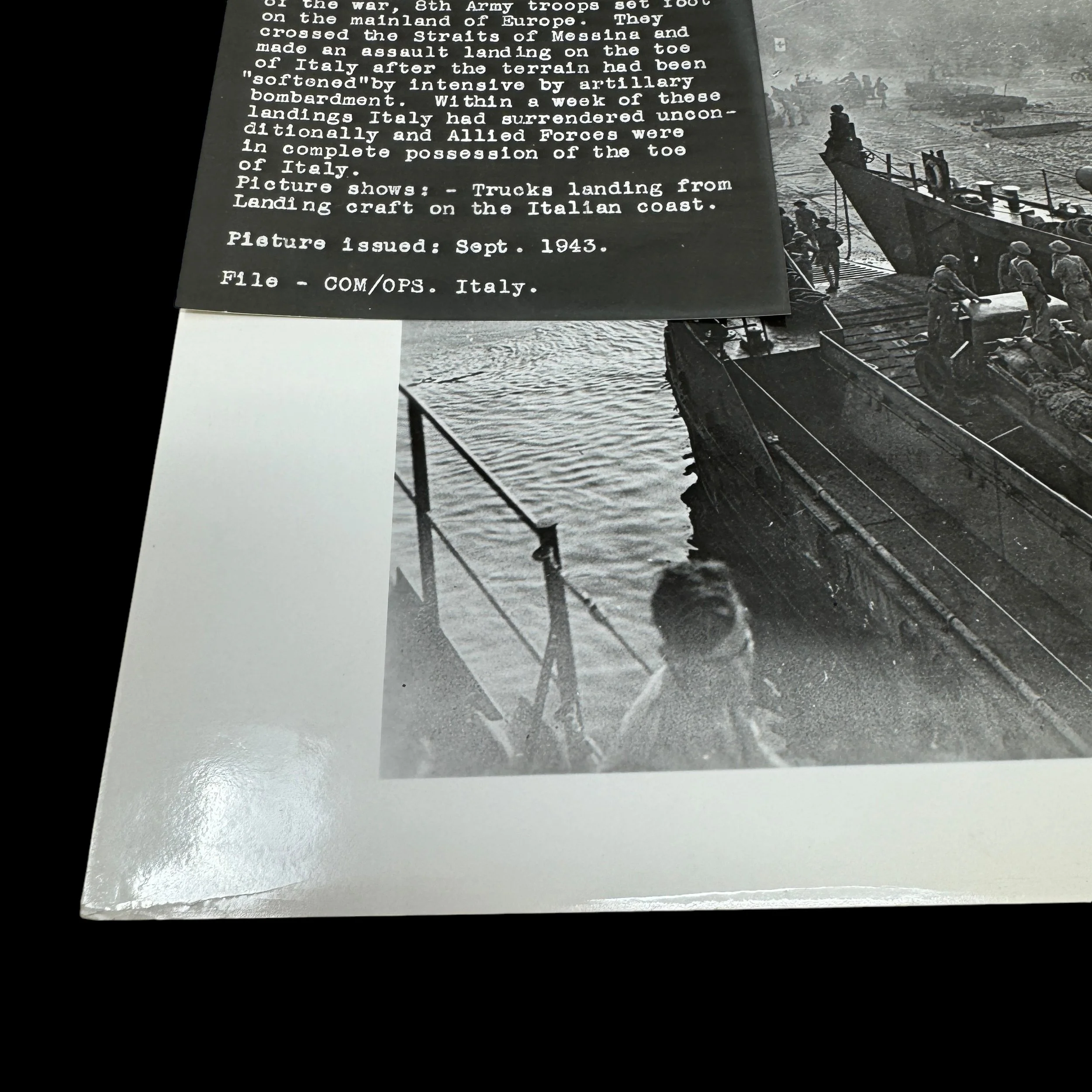
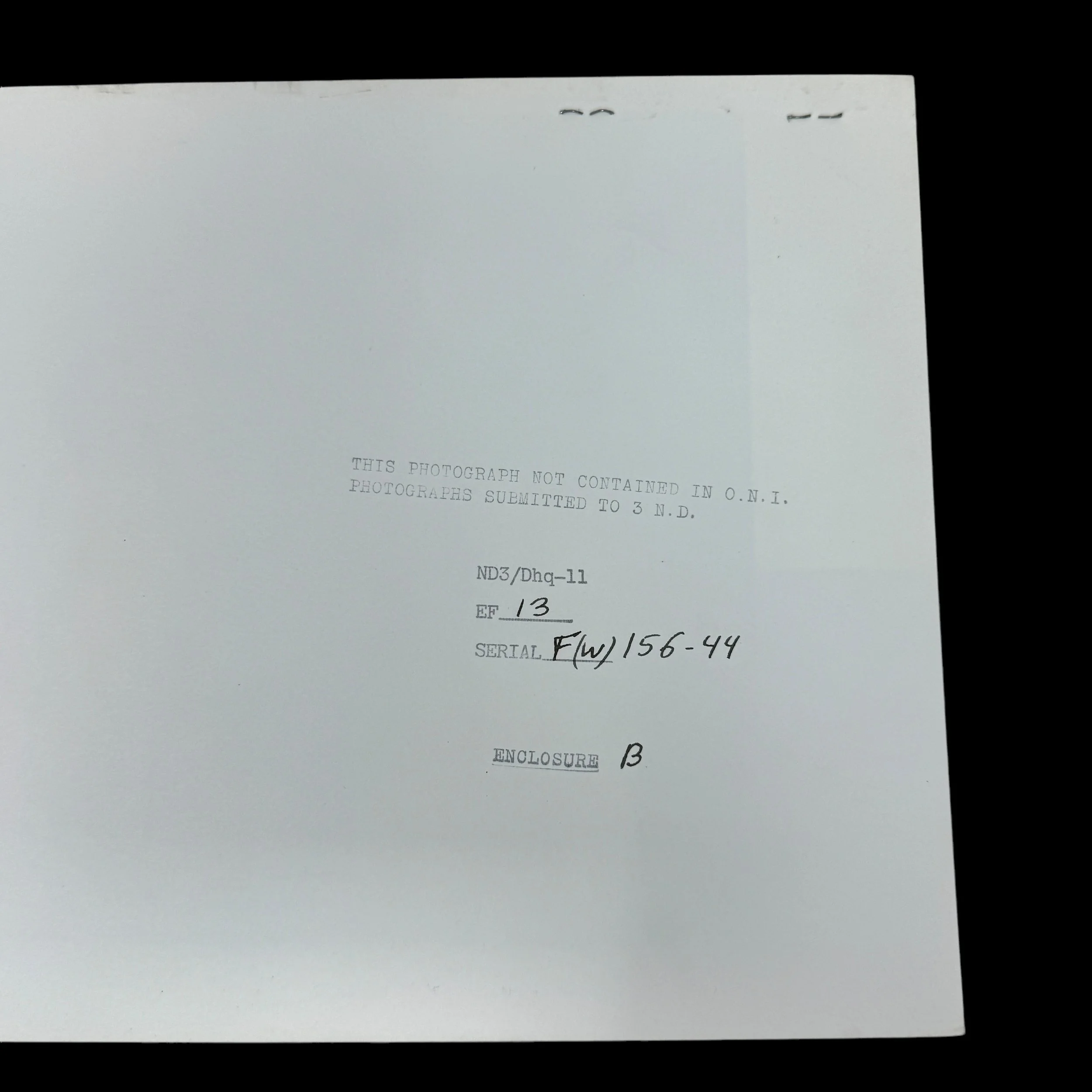
RARE! WWII 1943 Operation Avalanche "Type 1" Landing Craft on D-Day Mainland Italy Beachhead Military Intelligence Combat Action 8x10 Photograph
Comes with hand-signed C.O.A. and a full historical write-up
Size: 8.25 × 10 inches
This incredibly rare and museum-grade TYPE ONE original military intelligence photograph of the WWII Landing Craft during the D-Day invasion of Italy. This rare Type 1 photograph showed a detailed view of the Landing Craft in the combat zone.
The amphibious invasion of mainland Italy in 1943 was called Operation Avalanche. It was the main landing at Salerno, which took place on September 9, 1943. This operation was a critical part of the Allied campaign to liberate Italy from Axis control. It followed the successful invasion of Sicily (Operation Husky) and was aimed at knocking Italy out of the war and establishing a new front in Southern Europe.
While Operation Avalanche refers specifically to the landings at Salerno, other coordinated operations took place along the Italian coast as part of the overall campaign to secure a foothold in Italy.
British Landing Crafts in World War II: The Key Role in the D-Day Invasion of Italy (1943)
World War II stands as one of the most significant conflicts in human history, marked by pivotal battles that shaped the course of the 20th century. Among the strategic efforts to liberate Europe from Axis control, amphibious assaults became a hallmark of Allied operations. While D-Day in Normandy is often the most discussed, the invasion of mainland Italy in 1943—particularly the landings at Salerno and other key coastal points—showcased the essential role of British landing crafts. These vessels, designed to deliver troops, vehicles, and equipment onto hostile shores, played a critical role in ensuring the success of these amphibious operations. This essay focuses on the development, utilization, and significance of British landing crafts during the invasion of Italy, illuminating their importance in the broader context of World War II.
The Evolution of British Landing Crafts
Prior to World War II, the British military understood the need for effective amphibious capabilities, but it wasn't until the war's outbreak that serious developments were made. Early experiments with landing crafts were influenced by lessons learned from the failed Gallipoli campaign during World War I. The necessity for improved amphibious vehicles was clear, and with World War II looming, the British military began developing specialized vessels to meet these demands.
British landing craft development was spearheaded by key figures like Sir Walter Runciman and others within the Admiralty, who saw the need for versatile, shallow-draft vessels that could ferry troops and supplies directly onto beaches. By the time of the North African and Italian campaigns, British engineers had perfected several types of landing crafts, including the Landing Craft Infantry (LCI), Landing Craft Tank (LCT), and the smaller Landing Craft Assault (LCA). These crafts, along with American-designed vessels, became the backbone of Allied amphibious operations.
The LCA, in particular, was notable for its compact size and ability to carry around 36 troops. It was typically used in the initial stages of landings, bringing the first wave of infantry to the shores. The LCT, on the other hand, was larger and could transport tanks, vehicles, and other heavy equipment. The synergy of these landing crafts allowed the Allies to carry out complex amphibious assaults with both manpower and firepower.
The Strategic Importance of Italy
By 1943, the Allies had secured North Africa and were looking for the next point of attack in their Mediterranean strategy. Italy, often referred to as the "soft underbelly of Europe" by Winston Churchill, became the logical next step. The aim was to knock Italy out of the war and open up a new front against Nazi Germany. Operation Husky, the Allied invasion of Sicily in July 1943, served as a precursor to the Italian mainland assault. The success of Husky, in part due to the effective use of British and American landing crafts, paved the way for the more challenging mainland invasion.
The invasion of mainland Italy began in September 1943, under the codename Operation Avalanche, with the primary landings taking place near Salerno. The coastline presented a challenging environment, with narrow beaches, steep cliffs, and well-defended German positions. The success of the operation hinged on the ability of the Allied forces to establish a secure beachhead and bring in reinforcements and supplies swiftly. This is where British landing crafts became indispensable.
British Landing Crafts in Operation Avalanche
The landings at Salerno, which commenced on September 9, 1943, involved a massive amphibious assault led by the British 10th Corps and the U.S. 5th Army. The role of British landing crafts during this operation cannot be overstated. Over 600 landing crafts were involved in the operation, transporting over 160,000 troops and thousands of vehicles and tons of supplies onto the Italian mainland. This complex and coordinated assault relied on the versatility and efficiency of the British landing craft fleet.
Landing Craft Assault (LCA)
The LCA, which had proven effective in earlier operations, was once again the workhorse of the initial assault. It carried British and American infantry across the Gulf of Salerno, approaching the beaches under the cover of darkness. The LCA was designed to be silent and stealthy, allowing it to approach enemy positions with minimal detection. Despite heavy German defenses, these crafts delivered the first waves of Allied troops to the beaches, where they were immediately met with fierce resistance. The narrow beaches of Salerno, combined with the rocky terrain, made it difficult for larger vessels to approach. The LCA's shallow draft and ability to operate in these conditions were crucial in getting the infantry ashore.
Landing Craft Tank (LCT)
Following the initial infantry landings, the LCT played a critical role in delivering armored support. British and American tanks, essential for countering German Panzer divisions, were transported ashore via LCTs. These landing crafts, capable of carrying heavy vehicles, made multiple trips between the larger transport ships and the beaches. The ability of the LCTs to bring tanks and other vehicles directly to the front lines allowed the Allied forces to establish a strong defensive position, even in the face of counterattacks from German forces stationed in the hills overlooking Salerno.
Landing Craft Infantry (LCI)
Another vital player in the landings was the LCI, which transported larger contingents of troops, allowing for the rapid buildup of Allied forces on the beaches. The LCI, with its capacity for over 200 men, was used extensively to reinforce the beachhead after the first waves of assault troops had landed. These crafts made it possible to quickly move large numbers of troops ashore, despite heavy enemy fire. The continuous flow of reinforcements was essential to maintaining the momentum of the assault and ensuring the beachhead held against German counterattacks.
Overcoming the Challenges
The landings at Salerno were far from smooth. The British and American forces faced a determined German defense, which included heavy artillery bombardments, air raids, and counterattacks from Panzer divisions. The terrain also posed significant challenges. The beaches at Salerno were narrow, leaving little room for maneuver, and the surrounding cliffs gave the Germans a tactical advantage.
British landing crafts, however, proved their worth in these difficult conditions. The LCAs, LCIs, and LCTs operated under constant enemy fire, yet they continued to ferry troops, vehicles, and supplies to the beaches. Their shallow drafts allowed them to land even in the shallow waters of the Italian coast, where larger ships could not venture. Furthermore, their resilience in the face of German attacks ensured that the Allied forces maintained a steady flow of reinforcements throughout the critical first days of the operation.
One of the key factors that contributed to the success of the landings was the continuous naval gunfire support provided by British and American warships. The landing crafts, while small and vulnerable, were able to coordinate their movements with the larger naval fleet, ensuring that German positions were suppressed as the assault crafts approached the shore. This coordination between landing crafts and naval support was a hallmark of British amphibious doctrine, refined through earlier operations in North Africa and Sicily.
The Broader Impact of British Landing Crafts in the Italian Campaign
The successful landings at Salerno marked a turning point in the Italian campaign. The establishment of a beachhead allowed the Allied forces to advance northward, eventually leading to the liberation of Rome in June 1944. The British landing crafts, which played such a crucial role in the early stages of the invasion, continued to be used throughout the campaign, facilitating further landings along the Italian coast.
In addition to their role in direct amphibious assaults, British landing crafts were also used for logistical purposes. As the Allies advanced, these crafts were used to transport supplies, equipment, and reinforcements to forward positions, ensuring that the momentum of the campaign was maintained.
The lessons learned from the Italian landings also had a significant impact on future operations, most notably the D-Day landings in Normandy in June 1944. The coordination between landing crafts, naval gunfire, and airborne troops during the Italian campaign provided valuable experience that was later applied during the invasion of France.
The British landing crafts played an indispensable role in the D-Day invasion of mainland Italy in 1943. Their development, versatility, and resilience were key factors in the success of the amphibious assault at Salerno, which paved the way for the Allied advance into Italy and ultimately contributed to the defeat of the Axis powers in Europe. The effectiveness of these vessels in ferrying troops, vehicles, and supplies onto hostile shores, even in the face of fierce resistance, underscored their importance in the broader context of World War II. Through their use in the Italian campaign, British landing crafts helped shape the outcome of the war and left a lasting legacy in military amphibious operations.